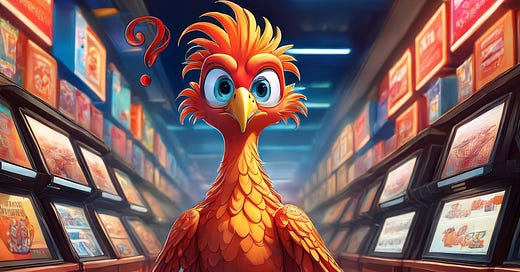Blockbuster Beat Netflix to Streaming—But Still Lost. Here’s Why.
Technology alone doesn’t drive growth—personalization does.
It’s Friday night. You finally get to unwind. Remote in hand, you open your favorite streaming platform—but there’s one problem.
What do you watch?
You scroll through the "For You" section, and boom—you find a hidden gem that’s exactly what you needed. You finish it, love it, and now you can’t wait to tell your friends.
That’s personalization at work. Netflix didn’t just recommend a movie—it turned you into an advocate. You’re more engaged, more likely to return, and now, you’re marketing the platform for free.
But let’s jump back to 1996.
Same Friday night, same excitement. But instead of instant recommendations, you’re at Blockbuster. No algorithm, no tailored suggestions—just aisles of VHS tapes. If you’re lucky, an employee might give you a decent recommendation. If not? You pick at random and hope for the best.
This is why Blockbuster lost.
Netflix didn’t just offer more movies—it removed the hardest part of watching: choosing. The hardest part of choosing a movie isn’t the selection—it’s decision fatigue. By curating recommendations, Netflix didn’t just help users discover new films, it made watching them effortless.
Sure, Netflix made rentals more convenient with DVDs by mail. But convenience wasn’t what won. What truly set Netflix apart was the data-driven personalization engine quietly learning in the background.
Every time a user rented a DVD, Netflix collected insights—what they watched, liked, or returned quickly. This feedback loop powered better recommendations, reduced friction, and made every next choice easier.
By the time streaming took off, Netflix wasn’t just another platform—it was an AI-driven powerhouse. Meanwhile, Blockbuster actually launched streaming first (in 2004, before Netflix in 2007)—but without personalization, it never stood a chance.
What This Means for Your Business
Personalization isn’t just a nice-to-have—it’s a growth engine. Whether you're building a product, marketing a service, or designing user experiences, the key is removing friction and increasing relevance.
AI is a tool, not the starting point. First, figure out what decisions your users struggle with. What choices slow them down? What’s one small way you can make their next step obvious? Start there. AI can scale it later—but the real win is understanding the problem first.
Even without AI, you can start simple:
1️⃣ Offer a choice upfront → Let users indicate their interests early. Example: Do they want a product tour or to dive straight in?
2️⃣ Deliver personalized experiences → Even manually at first. Example: Ask users about their needs, then tailor what they see next.
Over time, track user behavior to improve:
Use heatmaps (Hotjar, Clarity) to see what people engage with.
Collect feedback via simple surveys (Typeform, Google Forms).
Test AI-powered personalization tools (Mutiny, ChatGPT API, Segment).
Look at how Netflix does it:
AI personalizes recommendations → You watch more.
More engagement → Better data.
Better data → Smarter recommendations.
Smarter recommendations → Higher retention & advocacy.
More referrals → Growth flywheel in motion.
You don’t need Netflix-level AI to start. Pick one small area where personalization could reduce friction—whether it’s tailoring content, automating recommendations, or just removing unnecessary choices. Experiment. Learn. Improve. That’s how you build your own growth engine—step by step. That’s the phoenix mindset in action.
🚀 Do The Work: What’s one way you could personalize your user’s experience—without AI? Drop your thoughts below. 👇
And remember—the goal isn’t just getting users. It’s turning them into your best marketers.
Let’s build. 🔥 #PhoenixMindset




